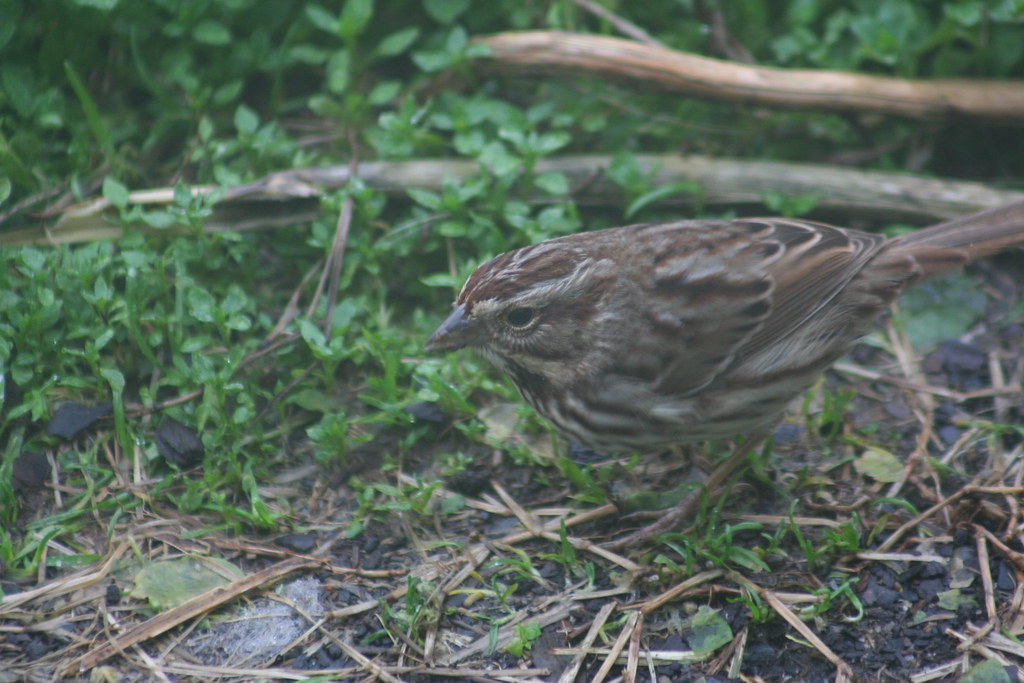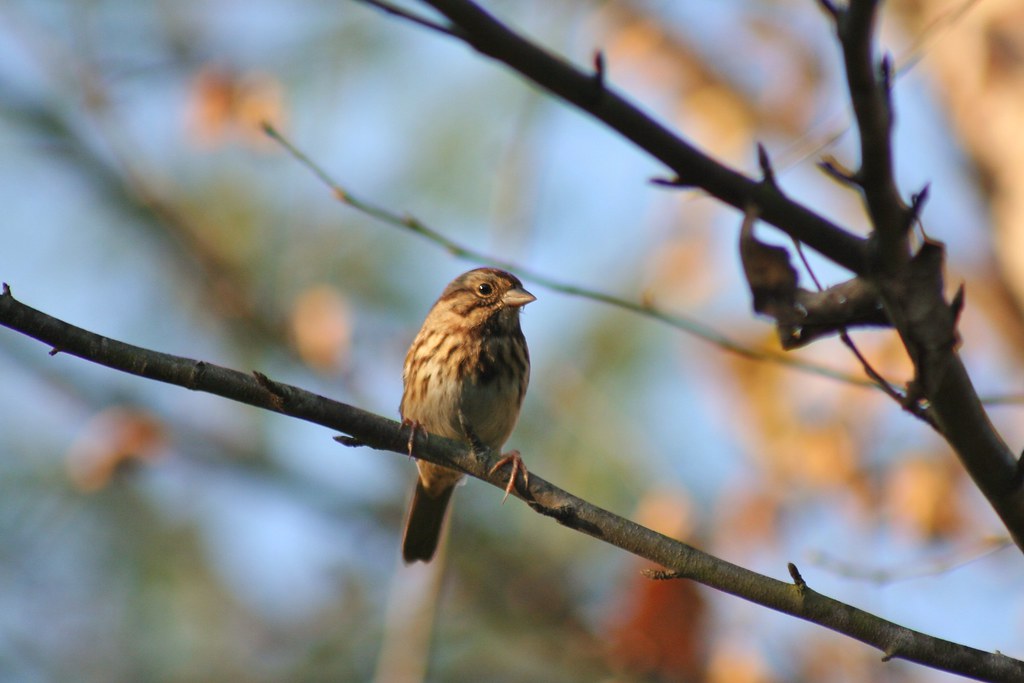The Song Sparrow (Melospiza melodia) is a common, streaky sparrow. Like its larger cousin the Fox Sparrow, it has a wide range, from seaside scrub to your backyard.
Let's be honest- Song Sparrows aren't up there on the "pretty" chart. They're brown and gray, streaky, and skulky. When you're out in the middle of a NWR and you see a little brownish thing flying low and landing in some scrub and you pish desperately, hoping for something good (like a Lincoln's or a Vesper or a Le Conte's or a Henslow's) and up pops the familiar spot-breasted, mustached bird letting out a curious seet? in response. They're downright annoying, like butterbutts in the spring, and most birders pass over them without a second glance.
 |
| It's okay, Song Sparrow, you're not hated by everyone! |
One thing I enjoy about Song Sparrows is variation in both song and color. I have noticed differences in songs from spots only 30 minutes from my home. The ones in Florida and South Carolina sound different than the ones in my yard. I have read that most sparrows sing the same song in a location; males with different songs stand out and are more harshly attacked by resident males. The song is a mix of clear and buzzy notes, and are pretty loud when you realize how small these little brown jobs are!
| From the Nat Geo guide and site. |
Song Sparrows come readily to feeders, preferring to feed on the ground with towhees and thrashers but willing to perch on feeders if they're hungry enough. Their favorite seed, like other ground dwellers, is white millet, but they aren't too picky and will settle for sunflower seeds or suet. It's because of this dietary freedom that they can survive the chilly winters while others, like warblers, have to migrate elsewhere to get their insects.
With all of this in mind, next time you see this successful, hardy sparrow, take a moment to appreciate it!
Happy birding!


No comments:
Post a Comment